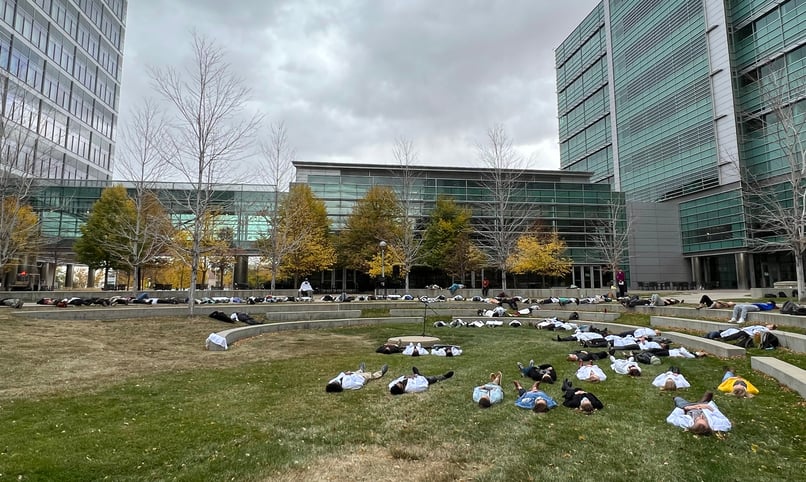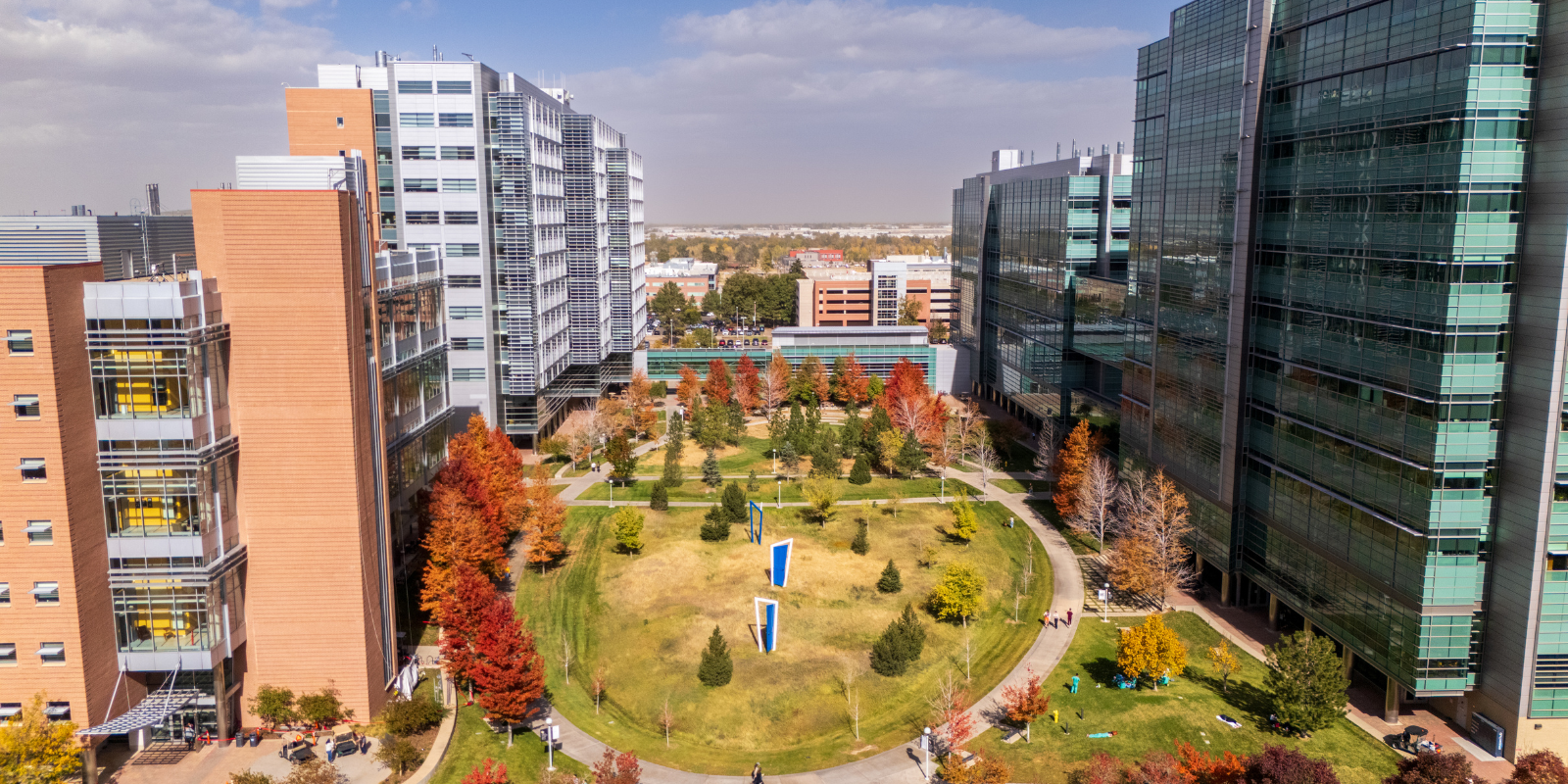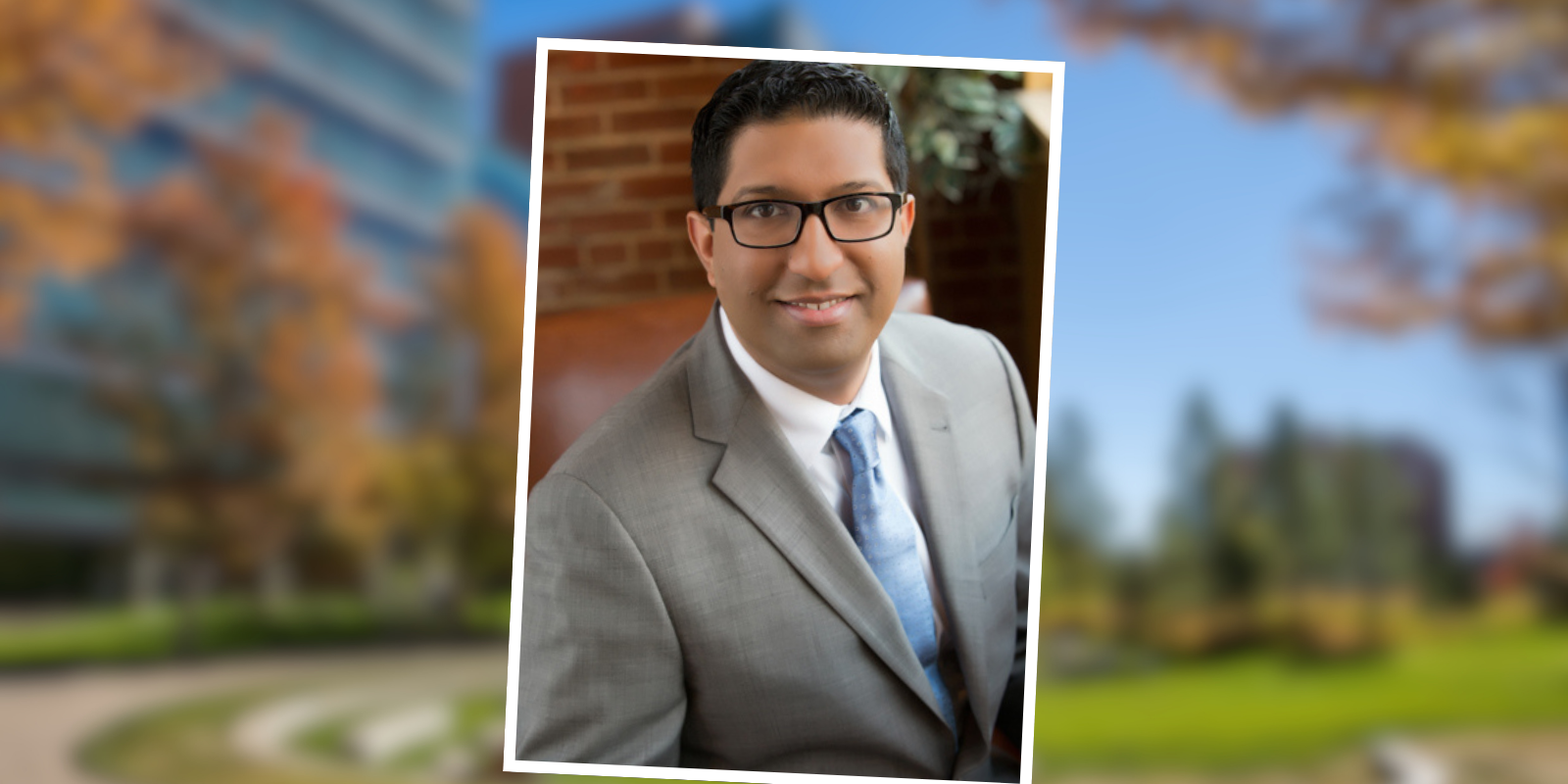The wind kicked up as soon as everyone “died,” cold and fierce around the dozens of students, faculty members, and staff members lying on the concrete and browning grass.
Eight minutes and 46 seconds is a long time to be buffeted by a frigid autumn wind, and the symbolism was clear – the centuries of systemic and structural racism and racial injustice that Black Americans have endured, the cultural and social storms that blow and rage and never seem to let up.
Tuesday afternoon, students, faculty members, and staff laid on the grass and sidewalk on the CU Anschutz Medical Campus research quad for the eight minutes and 46 seconds that a Minneapolis police officer knelt on George Floyd’s neck in May 2020. It was the culmination of a Die-In, an annual event sponsored by the University of Colorado School of Medicine chapter of White Coats for Black Lives, to “protest and commemorate those lives lost to structural racism and racial injustice, and those who’ve been impacted by structural racism and racial injustice,” explained Jordan Rice, a second-year medical student and White Coats for Black Lives co-president.
“It’s important to raise awareness, but White Coats for Black Lives doesn’t favor performative actions,” said Helio Neves da Silva, a fourth-year medical student and White Coats for Black Lives co-president, addressing those in attendance. “We don’t think this Die-In is going to create the meaningful changes we want. We’re here today to ask you to take action.”
Building allyship to make change
That daily action to address and rectify centuries of structural racism and racial injustice is the work of a lifetime, emphasized James Carter, MD, an assistant professor of cardiology, drawing in stark lines the racism and injustice he has experienced for most of his life – from Long Island, N.Y., police officers who drew guns on him as a 13-year-old while he and his friends played basketball, to a coach who told his teammates Carter could never become a doctor, to a heart attack patient who refused to be treated by Black residents.
“Laws were erected and created to restrict and limit my potential and prevent me from reaching my destiny, yet here I stand,” Carter said. “You can call this a miracle, you can call it a conundrum, yet here I am.
“I am afraid and optimistic; I am weary and rejuvenated. I worry about each and every one of you, the victims and the allies, the woke and the quiescent. We have to find our way to accomplishment, knowing the true joy is in the journey, getting up again and again and again and again, knowing all the while that the journey is unfair.”

Dozens of students, faculty members and staff lay on the research quad for eight minutes and 46 seconds Tuesday, the amount of time a Minneapolis police officer kneeled on George Floyd's neck in May 2020
Shanta Zimmer, MD, a professor of infectious disease and associate dean of diversity and inclusion for the CU School of Medicine, noted that some in attendance Tuesday might question whether they should be at the Die-In, not having come into medicine confronting the same challenges as their Black and Brown colleagues.
“Yes,” Zimmer confirmed, “we need your allyship. There are no changes made in isolation.”
She added that the work to confront and change centuries of structural racism and racial injustice may seem overwhelming and motivation may be difficult to summon sometimes. In those moments, she said, she calls to mind what both George Floyd and Eric Garner said as they were being killed by police officers: “‘I can’t breathe,’ and if that isn’t a call to the medical profession, I don’t know what is,” Zimmer said.
Addressing historic disparities in medicine
Bruck Gezahegn, a second-year medical student, said he attended the Die-In Tuesday in part to experience a community of support and of a burden shared.
“Sometimes it seems like the burden is on us to feel all the weight of racism,” Gezahegn explained. “It’s important to see that we are not alone. Small things can be watershed, how as a Black kid, wearing a hoodie can be seen as a weapon. Those things are hard to overlook.”
Carter emphasized that health care and medicine are a nexus to which many paths of structural racism and racial injustice join – from historic disparities in access and quality of care for people of color to representation in medical schools and on medical faculties that is disproportionate to the general U.S. population.
“When we decided to go into medicine, we decided to care for patients and we decided to save lives,” da Silva said. “But as a profession, we’ve acted like Black pain doesn’t matter.”
He then asked the several dozen in attendance to join him in saying, “You cannot silence us. Silence is complacence. Tolerance is the seed that sprouts injustice. We will not tolerate racism. Black lives matter!”



